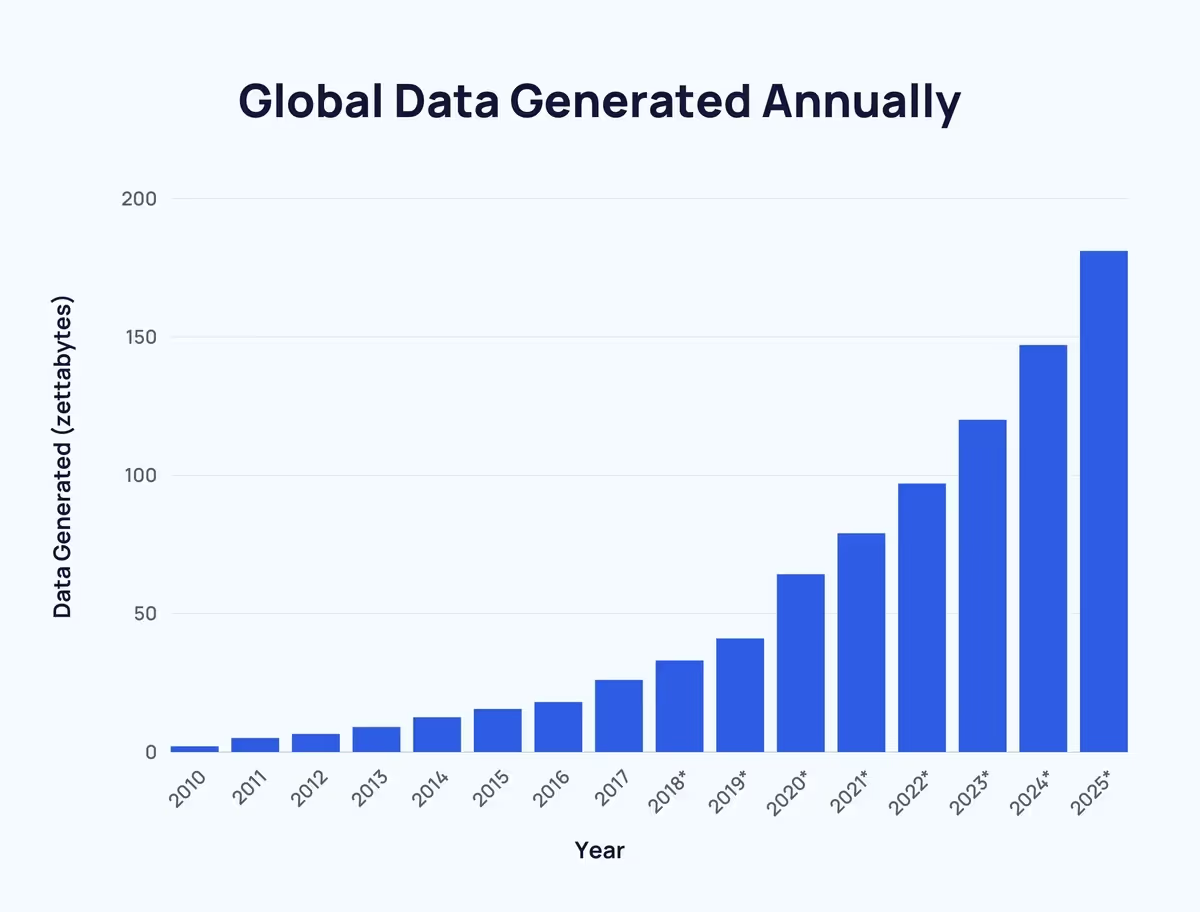
We create more content every three hours than we have in all history up to 2003.
It’s a staggering statistic, isn’t it? In fact, it’s so scroll stopping that there’s a good chance you’ve already read it.
The thing is, it might not actually be true.
Then again, it might.
When we fact checked the statement last week it was, according to the Google AI overview, ‘generally considered not true’ on Wednesday, but ‘generally considered true’ on Thursday.
What is undoubtedly true is that we are drowning in content, and a lot of it isn’t even reliable, helpful or true. Global daily content creation stands at 402.74 million terabytes. A metric so incomprehensible that most of us don’t have a clue what it means, other than this:
The world does not need any more content.
But where does this leave businesses who have a lot of things to say? Specifically, how do we, as IC professionals, deliver content without risking overwhelm, or death by a thousand terabytes?
Cutting through the noise
If you feel like it’s getting harder to get through to people, it’s not because you’re getting worse at your job! It’s because competition for attention is getting tougher and tougher. Globally, ten times more data is being generated in 2025 than in 2016, and it’s estimated that 90% of the world’s data was generated in the last two years.

It’s easy to think that as communicators, our work is under threat by AI. And it is, if all we are doing is churning out more content that nobody really needs. But if what we’re doing is cutting through the noise instead of adding to it, then our work matters more now than ever.
Finding the right frequency
If you’re old enough to have had an analogue radio, you’ll remember the joy of finding the right radio station amidst all the background crackle. It’s up to us to provide colleagues with the same kind of feeling. When they find our content we want them to feel that the right message has come through to the right person. And we can only do this by tuning into their needs first.
A simple but powerful question to ask before sharing a piece of content is:
“Will this create clarity, or just noise?”
And we can’t honestly answer this without knowing our audience well. Quantitative metrics such as click throughs and open rates are important, but they can’t provide the same kind of information as meaningful qualitative data.
Nobody panic! We’re not telling you to create an online questionnaire, or another piece of content that nobody really wants. Instead, we’re suggesting that you get together with your colleagues, face-to-face, to find out things like:
- How they want to receive their comms - SMS, intranet, apps or email.
- What they want to read more about.
- What they never want to read about again.
- What subjects they need more clarity on.
- What career problems keep them awake at night.
- What their name is.
No, that final one isn’t a mistake. It’s there because so much internal communication ignores it altogether. For years the research has been telling us that personalised emails are the way to go, yet so many IC emails still start with ‘Dear Colleague’ or no greeting at all. Using a person’s name shows that what we have to say is directed at them. It’s the most fundamental way to cut through the crowd and get the right person to pay attention.
Respecting people
Respecting colleagues is about more than using their name. It’s about respecting their time and being highly discerning about what we try to fill it with. Think about mega platforms like Netflix or Spotify. A huge part of their popularity is down to the time-saving they offer. Instead of wading through pages of stuff in the hope of finding something we’ll like, one of the first things we’re given is tailored suggestions based on past behaviour.
AI can help us do the same with IC. For example, it can tailor send times, segmentation, targeting and subject lines, based on what works best for the individual receiving them.
Of course, sometimes we have to send out information regardless of what people are interested in. But this doesn’t mean we can’t present it in a more appealing way. Not many people will be enticed by the subject line ‘Monthly health and safety update’, but they’d probably open an email titled ‘You’ll never guess what set the fire alarm off last week’.
A line like this won’t just get a better open rate, it also shows that you’re tuned into your audience and actively trying to engage with them.
In summary…
The sheer volume of content in 2025 has created an unprecedented opportunity for IC professionals to stand out by tuning in. In fact, we believe that the only way to compete with AI is by leaning into our humanity and communicating with each other as individuals. Great IC is about finding the right frequency, instead of adding to the noise.
To find out more about how we’ve done this for others – and how we can bring it to life for your organisation, get in touch.
More insights





